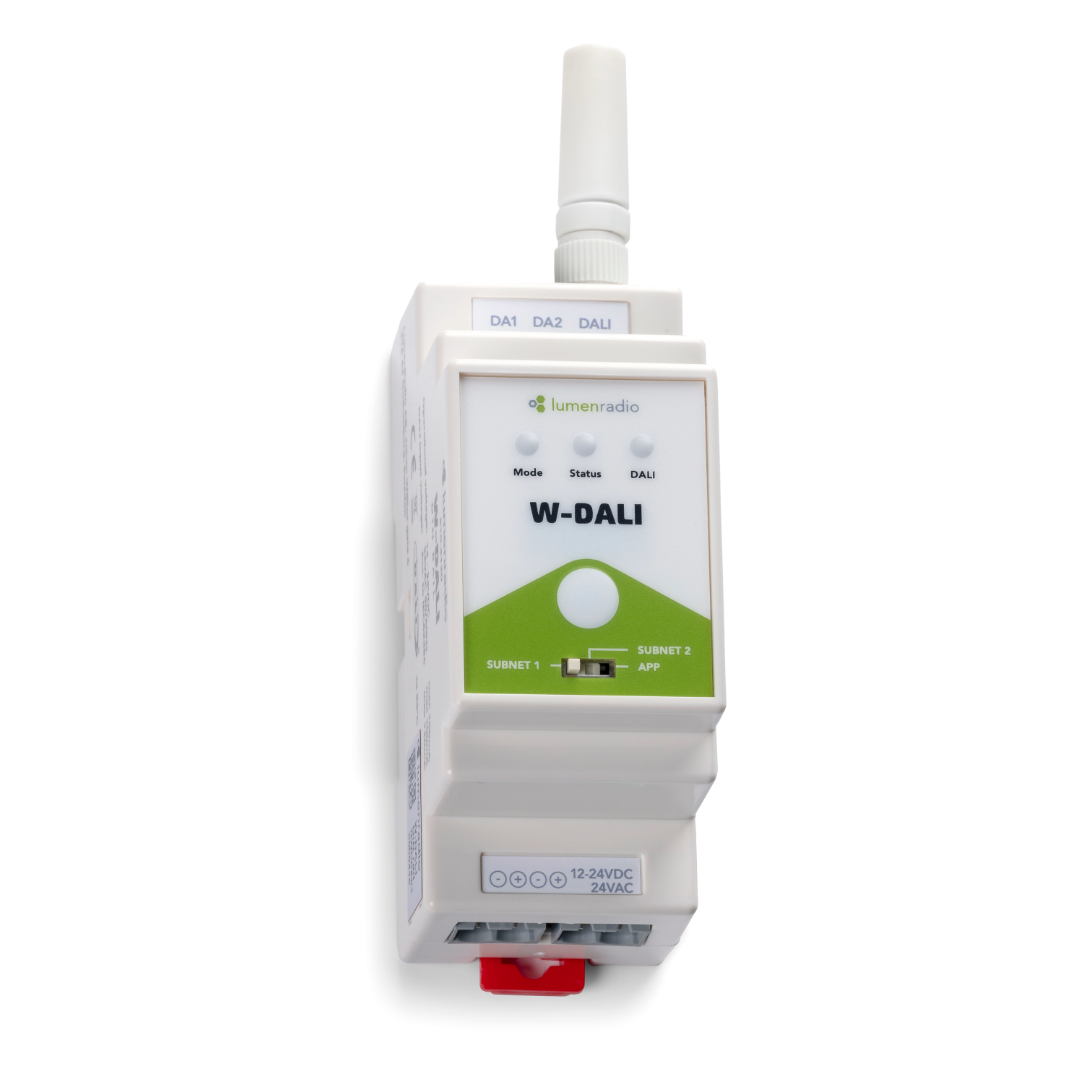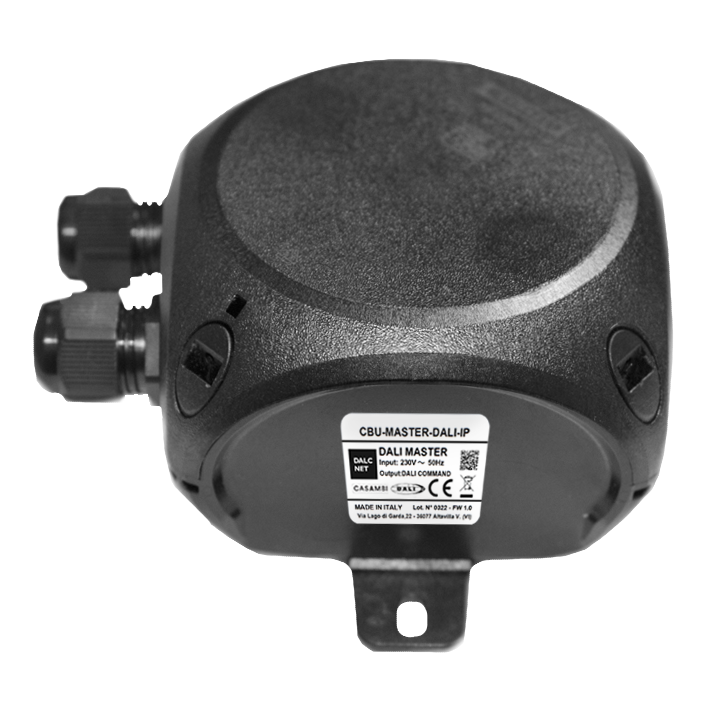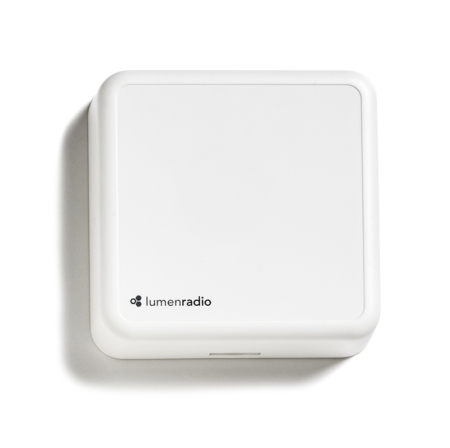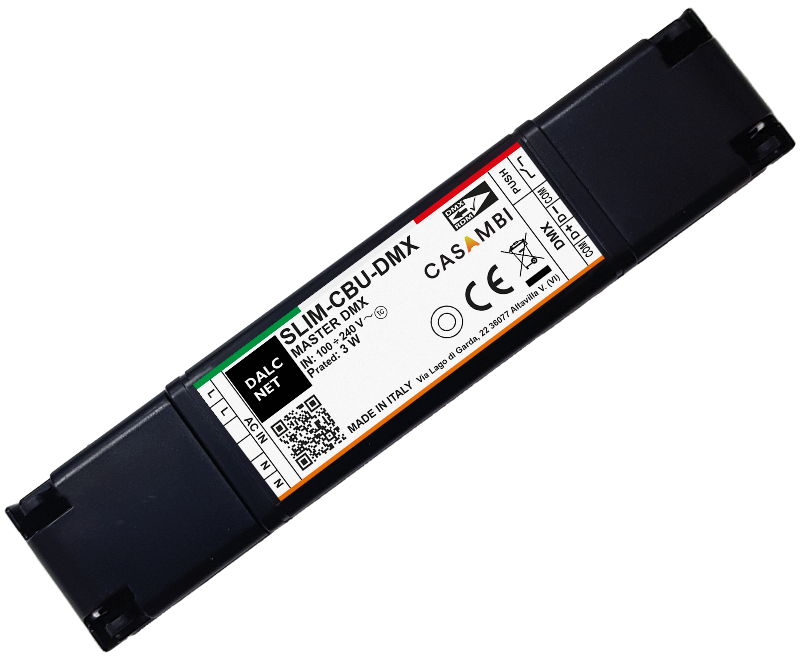GATEWAY
Discover all categories
- Select a value
-
- Select a value
-
Results
No exact match, try with fewer filters or a more generic term
Digimax LED Gateway: technical specifications and functionality
From the management of residential to industrial and commercial lighting, Digimax offers the best Dalcnet and LumenRadio gateways for LED Lighting, guaranteeing highly scalable and versatile, reliable and flexible solutions for numerous application contexts.
In addition to simply turning LED lighting systems on and off, Digimax gateways allow you to program personalized scenarios, set timed switch-ons and monitor energy consumption, contributing to more efficient lighting regulation.
LED lighting gateways are essential to ensure the connection and intelligent control of lights, facilitating communication between IoT protocols and devices. Thanks to the range of solutions offered by Digimax, it is possible to integrate gateways and signal converters, optimizing energy efficiency and obtaining fully customizable lighting.
- Modbus and BACnet LED gateways, ideal for the control of professional systems, allow centralized modulation of lighting in industrial and commercial spaces;
- DALI and Casambi LED gateways represent the ideal solution for the dynamic and dimmable control of LED lighting, in particular for home automation and smart homes;
- DIN Rail and Wall Mount Gateway, which guarantee easy application in LED lighting systems, inside electrical panels and wall installations;
- Transceiver and Transmitter wireless gateways, which ensure efficient, reliable and long-range communication between devices, optimizing remote control of light.
Lighting and home automation with Gateway LED: applications
Digimax gateways transform every LED lighting system into a smart and automated system, improving efficiency and functionality. Some of the main benefits include:
- Centralized control: management of all lights from a single platform, mobile app or voice assistants, with the possibility of programming different lighting effects and scenarios;
- Energy efficiency: advanced dimming of LED light, integration with automation systems and motion sensors to reduce consumption and optimize the system;
- Dynamic and scenographic lighting: variations of RGB, RGB+W and Tunable White lights and colours, configuration of lighting effects and synchronization with music or video;
- Solutions for every sector: from residential to commercial lighting, with specific gateways for every need, up to large-scale LED lighting projects.
Frequently asked questions about Gateways for Smart Lighting
What is an LED gateway and how does it work?
A gateway acts as a central hub, or more simply as a communication bridge, between the network and the LED lighting devices: by connecting to the network via Wi-Fi or cable, it communicates with other smart devices via wireless protocols such as Bluetooth, Modbus, BACnet and DALI. This allows you to manage the entire lighting system remotely, set scenarios and effects, automate switching on and off based on specific needs or environmental conditions.
What is an LED gateway used for in home automation?
A gateway for home automation lighting allows you to connect devices for the automation of LED light, creating customized integrations and programming, also optimizing energy consumption. It is particularly useful in projects where you want:
- Control the lights remotely via dedicated interfaces, smartphones or voice assistants;
- Adjust the lighting independently based on times, environments, weather conditions;
- Dim and adjust the colour, intensity, visual and scenographic effects of the LED lights;
- Integrate automation and smart home systems into lighting systems.
How to install a gateway for LED lighting systems?
The installation of an LED gateway varies based on the model and size of the lighting system (residential, commercial or industrial), but generally involves connection to the network and a power system, configuration via compatible software or dedicated app, connection to the LED devices and subsequent customisation.
What are the differences between LED gateway and LED controller?
The gateway connects the lighting system to the network, managing communication between the different devices and allowing remote control of the lights via apps or automation systems. Instead, the LED controller acts directly on the light fixtures, regulating switching on, intensity and color, receiving commands from the gateway and transforming them into electrical signals to send to the devices.
What are the differences between LED gateway and signal converter?
A gateway is a device that connects LED Lighting systems to the network, allowing remote control, advanced management and integration with voice assistants and apps. A signal converter, on the other hand, has the task of converting signals between different protocols, without network functions or remote control. If a gateway is equipped with a signal conversion function, then it can act as such as well; normally, however, the signal converter is limited only to the translation of signals between devices.
What are the differences between gateway transmitter or transceiver?
A transmitter is a device that transmits signals in a single direction, sending commands to lighting devices without receiving any feedback. A transceiver, on the other hand, is a more advanced device that transmits and receives signals, allowing two-way communication. In the context of LED lighting, transceivers are particularly useful for systems integrated with intelligent gateways and controllers, allowing optimized management of the entire system."
FAQ
Cos’è e come funziona un gateway LED?
Un gateway funge da hub centrale, o più semplicemente da ponte di comunicazione, tra la rete e i dispositivi di illuminazione LED: connettendosi alla rete tramite Wi-Fi o via cavo, comunica con altri dispositivi smart tramite protocolli wireless come Bluetooth, Modbus, BACnet e DALI. Ciò consente di gestire l’intero sistema di illuminazione da remoto, impostare scenari ed effetti, automatizzare l’accensione e lo spegnimento in base a specifiche esigenze o condizioni ambientali.
Come si collega un Gateway?
Il gateway si collega alla rete elettrica e ai dispositivi LED tramite cavi o wireless. Si configura attraverso un software o app per gestire centralmente i sistemi di illuminazione.
A cosa serve un Gateway?
Il gateway permette di controllare e monitorare in modo centralizzato e remoto i sistemi LED, integrandoli con protocolli domotici per automazioni e scenari luminosi personalizzati. Un gateway per l’illuminazione domotica consente di connettere i dispositivi per l’automazione della luce LED, creando integrazioni e programmazioni personalizzate, ottimizzando inoltre i consumi energetici. Risulta particolarmente utile nei progetti in cui si desidera:
Controllare le luci da remoto tramite interfacce dedicate, smartphone o assistenti vocali;
Regolare autonomamente l’illuminazione in base a orari, ambienti, condizioni meteo;
Dimmerare e regolare colore, intensità, effetti visivi e scenografici delle luci LED;
Integrare i sistemi di automazione e smart home negli impianti di illuminazione.
Come funziona un interruttore domotico?
Un interruttore domotico comunica con il gateway per accendere, spegnere o regolare le luci via app o comandi vocali, offrendo controllo remoto e automazioni programmabili.
Il gateway deve essere compatibile con i miei attuali driver LED o dimmer?
Assolutamente sì. La funzione principale del gateway è proprio quella di garantire la compatibilità, traducendo il protocollo di controllo nel segnale accettato dal driver LED o dal dimmer.
Che differenza c'è tra un gateway e un bridge?
Sebbene i termini siano talvolta usati in modo intercambiabile nel contesto domestico, in ambito professionale il Gateway è un dispositivo più complesso e potente. Il Gateway agisce come un router e un traduttore per reti diverse (es. da DALI a Ethernet), gestendo il traffico dati, la sicurezza e la logica di controllo. Un Bridge si limita solitamente a collegare due segmenti di rete che utilizzano lo stesso protocollo.
Quali sono le differenze tra gateway LED e signal converter?
Un gateway è un dispositivo che collega i sistemi di LED Lighting alla rete, permettendo il controllo remoto, la gestione avanzata e l’integrazione con assistenti vocali e app. Un signal converter, invece, ha il compito di convertire i segnali tra protocolli diversi, senza funzioni di rete o controllo remoto. Se un gateway è dotato di una funzione di conversione del segnale, allora può agire anche come tale; normalmente però il signal converter si limita alla sola traduzione dei segnali tra i dispositivi.
Quali sono le differenze tra gateway transmitter o transceiver?
Un transmitter è un dispositivo che trasmette segnali in un’unica direzione, inviando comandi ai dispositivi di illuminazione senza ricevere alcun feedback. Un transceiver, invece, è un apparecchio più avanzato che trasmette e riceve segnali, consentendo una comunicazione bidirezionale. Nel contesto dell’illuminazione LED, i transceiver sono particolarmente utili per sistemi integrati con gateway e controller intelligenti, permettendo una gestione ottimizzata dell’intero impianto.




